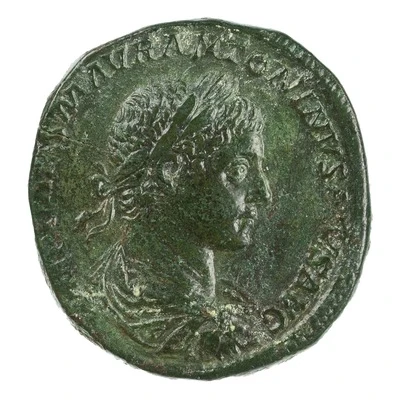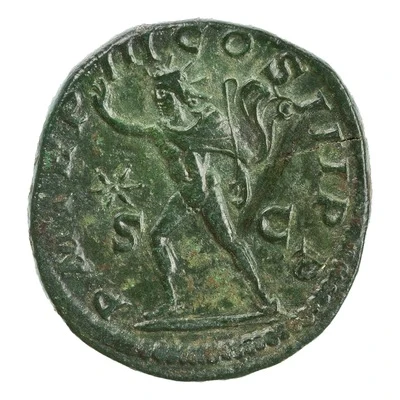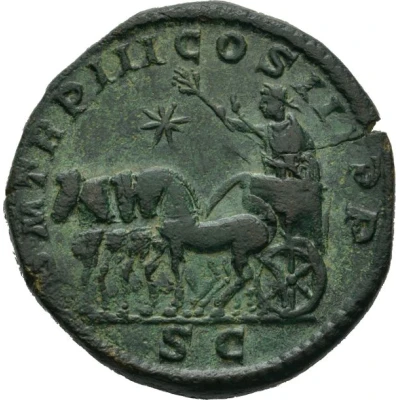Sestertius - Elagabalus P M TR P III COS III P P S C
220 year| Bronze | 20.8 g | - |
| Issuer | Rome › Roman Empire (27 BC - 395 AD) |
|---|---|
| Emperor | Elagabalus (Sextus Varius Avitus Basianus) (218-222) |
| Type | Standard circulation coin |
| Year | 220 |
| Value | Sestertius (⅛) |
| Currency | Antoninianus, Reform of Caracalla (AD 215 – 301) |
| Composition | Bronze |
| Weight | 20.8 g |
| Shape | Round (irregular) |
| Technique | Hammered |
| Demonetized | Yes |
| Updated | 2024-10-05 |
| Numista | N#276978 |
|---|---|
| Rarity index | 100% |
Reverse
Elagabalus, laureate, togate, seated left on curule chair, holding globe in extended right hand and sceptre in left hand; in field, star.
Script: Latin
Lettering: P M TR P III COS III P P S C
Translation:
Pontifex Maximus, Tribunicia Potestate Tertia, Consul Tertium, Pater Patriae. Senatus Consultum.
High priest, holder of tribunician power for the third time, consul for the third time, father of the nation. Decree of the senate.
Comment
Mass varies: 19.99–21.63 g;Source:
Online Coins of the Roman Empire (OCRE)
Interesting fact
One interesting fact about this coin is that it features an image of the Roman emperor Elagabalus, who was known for his controversial and unconventional reign. He was a priest of the sun god Elagabal, and his coinage often featured imagery related to the sun god and other deities. This particular coin, the Sestertius, was a standard circulation coin used throughout the Roman Empire during Elagabalus' reign, and it showcases the emperor's image and titles on one side, with the Roman goddess Victory on the other. Despite his unpopularity among the Roman Senate and aristocracy, Elagabalus' coinage remains a fascinating glimpse into his rule and the cultural influences of the time.



